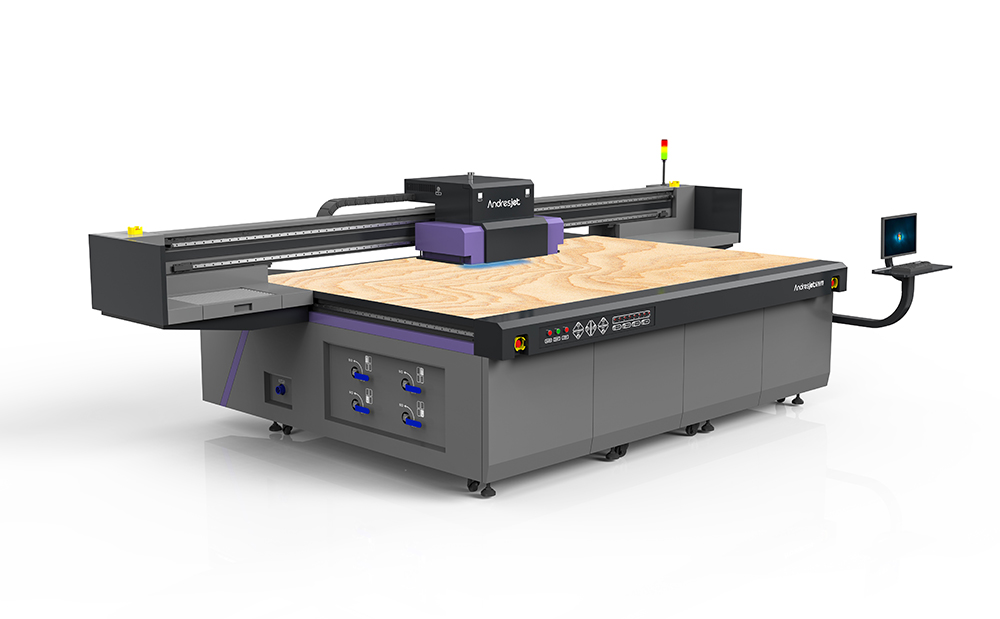UV Flatbed Printer: Common Myths and Misconceptions
UV Flatbed Printer: Common Myths and Misconceptions
In the realm of digital printing technology, UV flatbed printers have emerged as a versatile and efficient solution for a wide array of applications, ranging from signage and advertising to industrial manufacturing and personalized product decoration. However, like any other innovative technology, UV flatbed printers are not immune to myths and misconceptions that can often cloud the understanding of potential users or even industry insiders. This article aims to debunk some of the most common myths and misconceptions surrounding UV flatbed printers, providing a clearer picture of their capabilities, limitations, and true value.

Myth 1: UV Flatbed Printers Are Only Suitable for Small-Scale Productions
One of the most prevalent misconceptions about UV flatbed printers is that they are primarily designed for small-scale or hobbyist productions. In reality, UV flatbed printers are highly scalable and can be utilized in both small and large-scale production environments. The key lies in selecting the appropriate model that suits the specific production needs. High-end UV flatbed printers are equipped with advanced features such as automated material handling systems, larger print beds, and faster print speeds, making them ideal for high-volume production.
Moreover, the ability to print directly onto various materials without the need for pre-treatment or post-processing significantly reduces production time and costs, making UV flatbed printers a viable option for large-scale manufacturing. From printing on rigid substrates like glass, metal, and wood to flexible materials like plastics and fabrics, UV flatbed printers offer unparalleled versatility for a wide range of production scales.
Myth 2: UV Flatbed Printers Are Limited to Simple Graphics and Designs
Another common misconception is that UV flatbed printers are only capable of producing simple graphics and designs. In fact, UV flatbed printers can achieve exceptional print quality with high resolution and vibrant colors, allowing for the reproduction of intricate designs and detailed imagery. The use of UV-curable inks enables precise dot placement and instant curing upon exposure to UV light, resulting in sharp lines, smooth gradients, and vivid colors that can rival traditional printing methods.
Additionally, advancements in software and printing technology have expanded the creative possibilities of UV flatbed printers. Features such as variable data printing, white ink capabilities, and layering techniques enable the creation of complex, multi-dimensional designs with textured effects and unique visual appeal. This versatility makes UV flatbed printers suitable for a wide range of applications, including high-end packaging, fine art reproduction, and even 3D object decoration.
Myth 3: UV Flatbed Printers Are Difficult to Operate and Maintain
Some potential users may be hesitant to adopt UV flatbed printers due to the belief that they are difficult to operate and require extensive maintenance. In reality, UV flatbed printers are designed with user-friendliness in mind. Most modern UV flatbed printers feature intuitive control interfaces and software that streamline the printing process, allowing operators of varying skill levels to achieve consistent, high-quality results.
Furthermore, routine maintenance of UV flatbed printers is relatively straightforward and can be performed by the operator with minimal training. Regular cleaning of the print bed, ink system, and UV lamps, along with periodic inspections for wear and tear, are typically sufficient to keep the printer operating at optimal performance. Manufacturers often provide comprehensive maintenance guides and offer technical support to ensure that users can easily maintain their equipment.
Myth 4: UV Flatbed Printers Are Environmentally Unfriendly
Concerns about the environmental impact of UV flatbed printers are not uncommon. However, it is important to note that UV-curable inks used in these printers are formulated to be more environmentally friendly than traditional solvent-based inks. UV inks are low in volatile organic compounds (VOCs) and do not require heat to cure, reducing energy consumption and emissions during the printing process.
Moreover, the ability to print directly onto substrates without the need for additional adhesives or laminates further minimizes waste and environmental impact. Many UV flatbed printer manufacturers are also committed to sustainability, offering eco-friendly ink options and implementing recycling programs for ink cartridges and other consumables.
Myth 5: UV Flatbed Printers Have a Limited Lifespan
Lastly, there is a misconception that UV flatbed printers have a relatively short lifespan compared to other printing technologies. In reality, the lifespan of a UV flatbed printer can be quite long, often exceeding several years, depending on the quality of the printer, the level of maintenance, and the print volume.
High-quality UV flatbed printers are built with durable components and designed to withstand the demands of continuous operation. Regular maintenance and timely replacement of consumables such as UV lamps and ink cartridges can significantly extend the printer’s lifespan. Additionally, many manufacturers offer extended warranties and after-sales support to ensure that users can maximize the value of their investment over time.
In conclusion, UV flatbed printers are a versatile and efficient solution for a wide range of printing applications, capable of delivering high-quality results in both small and large-scale productions. By debunking common myths and misconceptions surrounding these printers, it is clear that they offer numerous benefits, including scalability, exceptional print quality, user-friendliness, environmental friendliness, and a long lifespan. As the technology continues to advance, UV flatbed printers are poised to become even more integral to the digital printing industry, enabling new levels of creativity and efficiency in various sectors.
